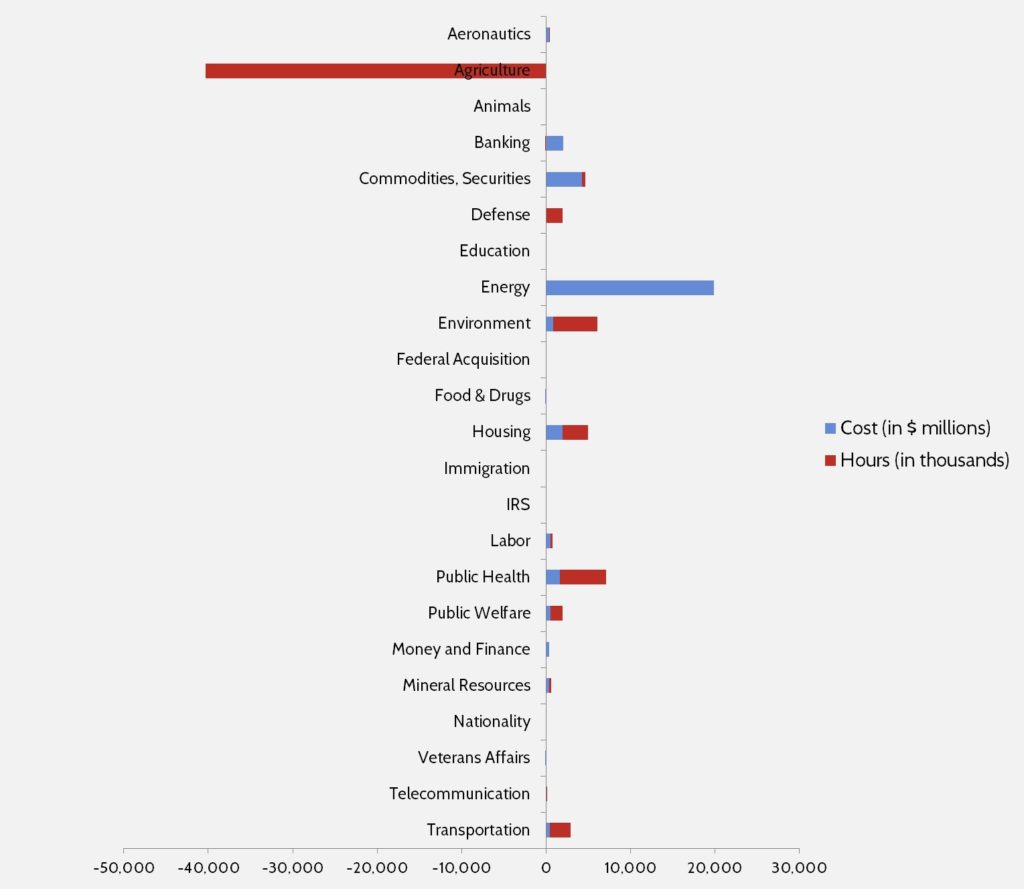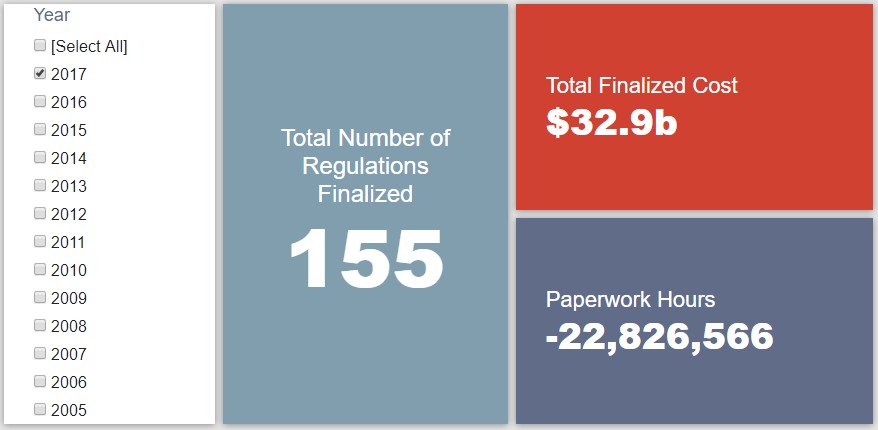Week in Regulation
August 21, 2017
A $60 Million Week
This past week in regulation was another relatively quiet one. The most notable rulemaking involved requirements for employers seeking a new award for hiring veterans. Total costs came out to roughly $60 million. Annualized costs were a mere $5.8 million against no monetized benefits. Although, agencies did put forward net savings in paperwork burdens of 31,485 fewer hours annually. The per capita regulatory burden for 2017 is $459.
Regulatory Toplines
- New Proposed Rules: 50
- New Final Rules: 70
- 2017 Total Pages of Regulation: 39,417
- 2017 Final Rules: $32.9 Billion
- 2017 Proposed Rules: $114 Billion
The American Action Forum (AAF) has catalogued regulations according to their codification in the Code of Federal Regulations (CFR). The CFR is organized into 50 titles, with each title corresponding to an industry or part of government. This snapshot of final rules (a change from earlier versions) will help to determine which sectors of the economy receive the highest number of regulatory actions.
This week’s most costly rulemaking comes from the Veterans’ Employment and Training Service (VETS), a sub-agency of the Department of Labor. The proposed rule implements the “Honoring Investments in Recruiting and Employing (HIRE) American Military Veterans Act of 2017” by establishing the criteria employers must meet to attain a “HIRE Vets Medallion Award.” The proposal could require nearly 60 thousand hours of paperwork annually and roughly $50 million in costs over 10 years.
Tracking Regulatory Modernization
There was only one notable rule falling under the purview of Executive Order (EO) 13,771 during this week. The Centers for Medicare and Medicaid (CMS) published a final rule that brings an annual savings of $3.9 million and 90,201 paperwork hours. However, as CMS notes, it also brings $9.7 million in “regulatory review costs.” While these are up-front costs (as opposed to annual), they essentially cancel out 2.5 years-worth of the paperwork savings. As such, this is likely why CMS considers the rule to be an “Executive Order 13771 regulatory action.”
On regulatory budget implementation, below are the agencies that have accrued annual savings or new costs under the president’s one-in, two-out budget; proposed rules are not included:
- Defense: -$400 million
- Interior: -$360.37 million
- Education: -$100 million
- Labor: -$78 million
- Veterans Affairs: -$1.9 million
- HHS: $23.91 million
- EPA: $60 million
- Energy: $34 million
Many of these figures are the result of CRA resolutions of disapproval. Given their historic regulatory output, AAF can predict that Defense, Interior, and Education will likely meet the goal of $0 in net regulatory costs by the end of this fiscal year.
Affordable Care Act
Since passage, based on total lifetime costs of the regulations, the Affordable Care Act has imposed costs of $53 billion in final state and private-sector burdens and 176.9 million annual paperwork hours.
Dodd-Frank
Click here to view the total estimated revised costs from Dodd-Frank; since passage, the legislation has produced more than 74.8 million final paperwork burden hours and imposed $38.9 billion in direct compliance costs.
Total Burdens
Since January 1, the federal government has published $146.9 billion in compliance costs ($32.9 billion in final rules) and has cut 17.3 million paperwork burden hours (due to 22.8 million in reductions from final rules). Click below for the latest Reg Rodeo findings.












